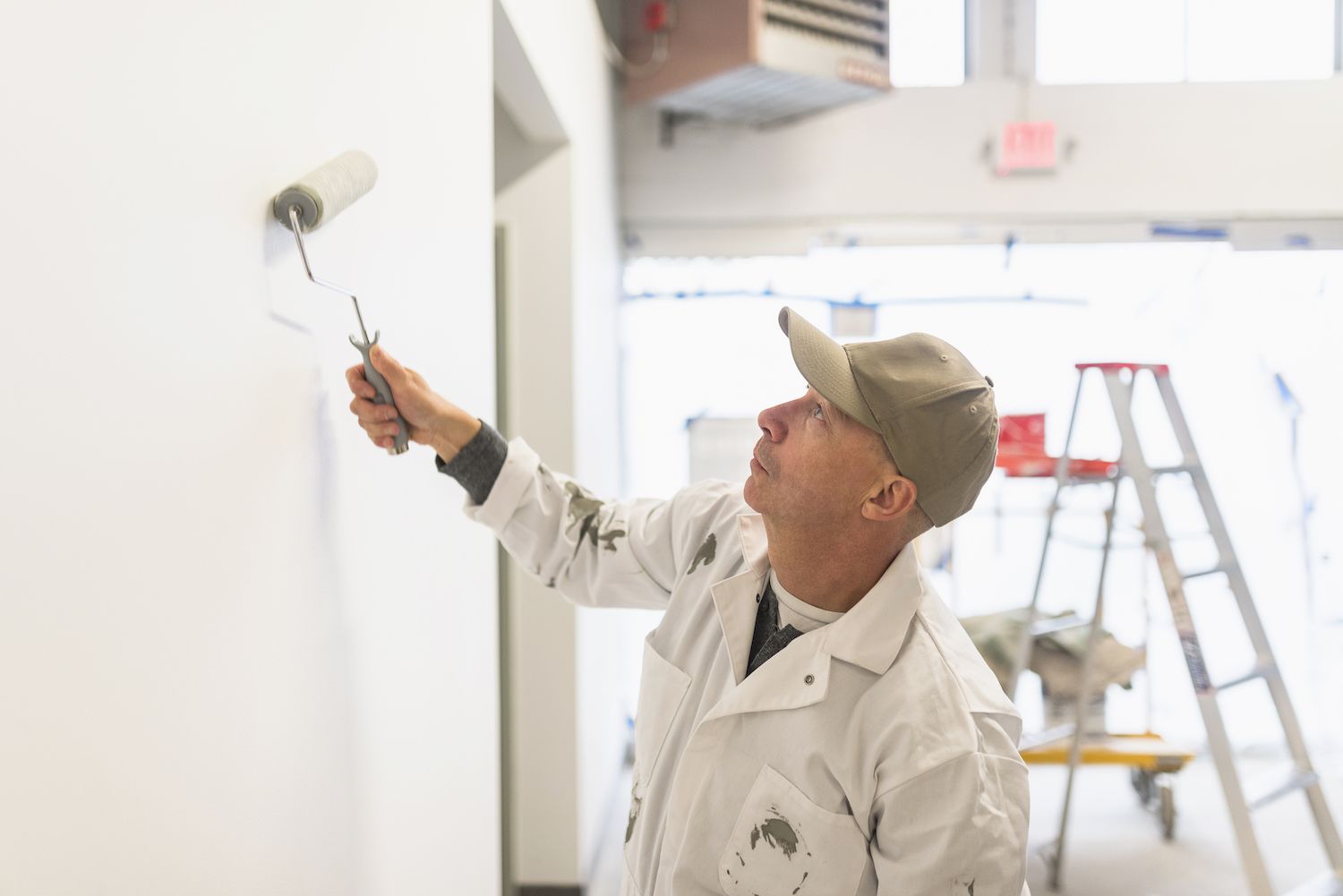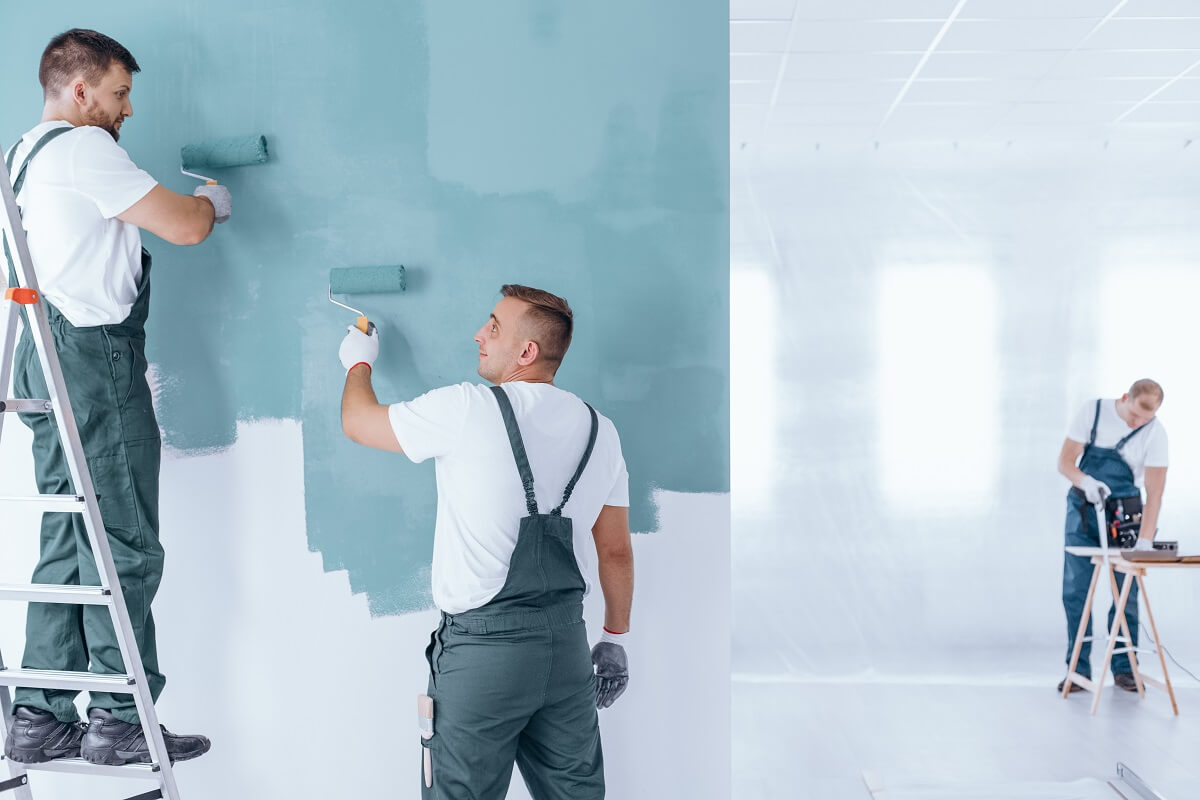Get to know the differences between a professional painter and a painter.
Who is a painter?
As the name suggests, the painter is required to use tools, paints, and various materials such as plasters daily. The core role of the painter is to change the overall texture and appearance of the building, various structures, walls, etc. Painters can operate alone or also along with a group of other paints and construction workers.
Most homeowners know how hectic it is, and putting in a little investment for long-term gain is the best way to go. Professional painters come with quality workmanship and a wealth of experience to bring the best out of your walls with colors and intricate designs.
There is a difference between a painter and a professional painter. Before you hire one for the job, it is a good idea to understand what differentiates a professional painter from an ordinary painter. Here’s listing four important aspects.
1. Experience
Professional painters know their way around painting interiors, as they have spent many years mastering their craft and sharpening their skill sets. The difference is in the levels of design and detail, which normal painters cannot even fathom pulling off. Experience alone can be a reason to hire professional painters.
2. No Additional Preps
Storage for paints and preparations is essential for painting and has to be taken care of when doing any type of interior design. Professional painters take care of everything when it comes to their painting projects, so you don’t have to worry about it. The cleaning will be taken care of, which will keep the room clean.
3. Color Specialists
You can’t beat professional painters when it comes to colors for the perfect interior design. The years of experience might have given them an intuition when selecting colors for the room, be it the kitchen or the bedroom. The way they take care of all aspects, which includes how the interior will be affected during the day and night, is a marvel to behold!
4. Time
Time is money, and professional painters are no different. They take this saying to heart, which can be seen in how they work, as they finish their work in a scheduled timeframe. This allows for proper planning and smoother decision-making for both the homeowner and the painters as well. Thus there is no lag when it comes to professional painters, and the same cannot be said for regular painters, even when they are under contract.
Now that we have understood the difference between a professional painter and a regular painter, let us take a closer look at the job description, key duties, and responsibilities of a painter.
The next section of the post provides complete information on the job description of a painter to help you have a deep understanding of what they do. It presents the key duties, tasks, and responsibilities that majorly make up the painter’s work description in most organizations. Please, continue reading to learn about the painter’s career.
What Does a Painter Do?
A painter is responsible for painting the interior and exterior surfaces of residential or commercial buildings using paint, varnishes, lacquers, sealers, or stains. The painter’s job description entails preparing walls and surfaces before executing the painting tasks.
So, they perform several pre-painting tasks, including utilizing sandpaper, scraping to strip old paint, executing preparation work for the surfaces, and applying filler.
Painters are also responsible for giving an extra touch to work done using power and hand tools to sand surfaces for further finishing and painting.
In addition to applying paints, they may also be required to apply all types of wallpaper, vinyl wall fabrics, coverings or coatings, drywall installation, tape, and texture work.
Painters are also responsible for providing on-site preparations for the building.
They cover fixtures and fill cracks and holes with an appropriate material, such as plaster. Before carrying out the painting job, they are also responsible for blending paints and other materials to achieve the right color or texture and then painting surfaces with various tools and according to instructions.
The painter’s job description also involves maintaining painting equipment to ensure proper performance and also working with other units to ensure quality products are utilized and on-time delivery.
They also strive to follow high-quality standards to reduce defects and exceed company standards but at an acceptable material cost.
Depending on the project, painters are primarily responsible for painting the building’s interior and exterior surfaces. The primary tasks, duties, and responsibilities that generally define the painter’s job description are listed below:
- Responsible for painting the exterior and interior areas of a company’s project.
- Execute pre-painting activities, including cleaning, scraping, sanding, patching, caulking, and masking adjacent surfaces before painting, papering, texturing, etc.
- Follow management’s instructions in maintaining an inventory of paint and supplies.
- Follow the owner, manager, or property manager’s instructions in executing the job utilizing appropriate finishes and applications.
- Comply with guidelines concerning the use of hazardous chemicals.
- Stay up-to-date with storage and disposal laws, regulations, codes, etc.
- After the project, clean areas, supplies, and equipment.
- Assist in storing leftover paint in the appropriate locations.
- Support team with special maintenance projects as needed.
Painter Job Description
If you have worked as a painter before or are currently working in that position, you can use the sample painter job description provided above to create the professional experience section of your resume. This will be especially helpful if the new job you are seeking requires work experience as a painter.
By applying the painter duties and responsibilities presented in the above job description in describing your work experience, you will be able to assure the recruiter that you are the right person for the job.
Painter Requirements – Skills, Knowledge, and Abilities for Career Success
If you are seeking to work as a painter, it is essential to know that most employers will want you to satisfy the following requirements to be considered for employment:
Education: To work as a painter, applicants are required to have a High School diploma or equivalent qualification.
Knowledge: Having cognate experience in residential or commercial painting and knowledge of remodeling is essential.
Communication Skills: Painters rely on the customer or manager’s instruction to execute the painting job. So they must communicate verbally, along with active listening abilities, to listen for what is not said expressly and apply relevant follow-up questions to elicit the needed information and capture a clear picture of the client/manager’s requirements.
Teamwork Skills: A painter works with a team, so it is vital that he/she is open to working in a team-oriented environment contributing his/her skills to the project, and open to giving a hand whenever there is a need.
Time Management: A painter must be able to plan his/her work in a manner that allows him/her to complete projects on time and within budget. He/she must be able to work professionally without wasting materials and time.
Conclusion
We hope our blog has shed enough light on what it is to be a professional painter. We have also gone one step ahead and discussed the roles and responsibilities of a professional painter. Additionally, we believe this post is equally useful to individuals interested in the painter career to increase their knowledge of the duties and responsibilities that majorly define the role.






